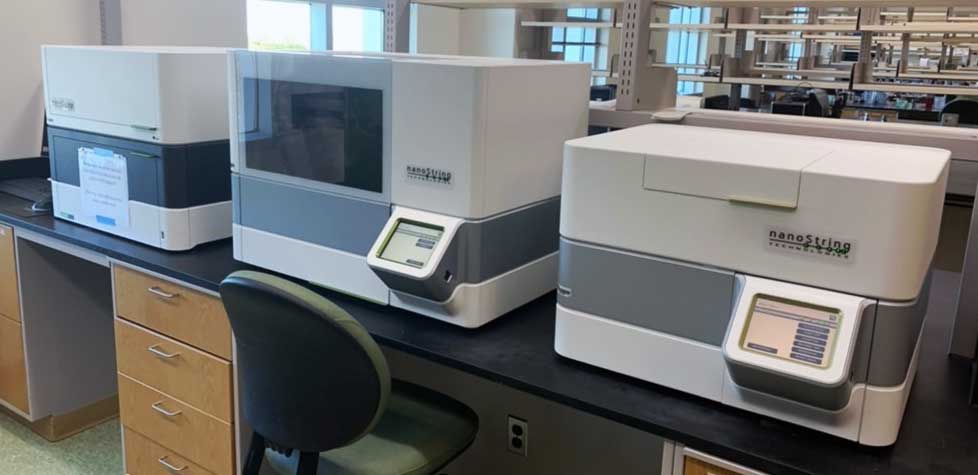USF Health Byrd Alzheimer’s Center and Research Institute
Byrd Spatial Biology Core

The Byrd Institute Spatial Biology Core provides access to robust nanoString Digital Spatial Profiler as a shared resource to enable state-of-the-art research across USF and promote interdisciplinary collaborations. The estimated 20,000 genes in the human genome are variably expressed in the body’s organs and tissue, each made of heterogeneous cell types characterized by shared and cell-type-specific gene expression profiles. Preserving the spatial context of gene and protein expression is essential to gaining deeper insights into tissue biology and the manifestation of disease pathology.
The nanoString GeoMx Digital Spatial Profiler is an advanced system that provides morphological context to high-plex protein or gene expression profiling from just one formalin-fixed, paraffin-embedded tissue section on a microscope slide. In this approach, spatial profiling of RNA and/or protein is performed on the GeoMx DSP platform, which includes imaging and fluidic components to capture spatial context as micropipette aspirates into 96-well plates.
For transcriptome assays, slides are hybridized with Whole Transcriptome Assay probes (RNA Probe set that targets 21,000+ transcripts plus ERCC negative controls) conjugated to unique DNA indexing-oligonucleotides (DSP barcodes) via a UV-photocleavable linker. Users define multiple regions of interest (ROI), each 200 µm in diameter, in desired areas of the tissue section. Then, DSP barcodes are released from the tissue via UV exposure, one ROI at a time, and automatically aspirated into 96-well plates. During library preparation (performed at the USF Genomics Core), the DSP barcodes are tagged with their ROI location and then sequenced on an Illumina sequencer for downstream analysis.
Spatial protein profiling relies upon antibodies coupled to photocleavable oligonucleotide tags designed for readout with nCounter (≤96-plex) or NextGen sequencing (over 100-plex) platforms. After hybridization of antibodies to slide-mounted tissue sections, the oligonucleotide tags are released from discrete regions of the tissue via UV exposure. Released tags are counted in a standard nCounter assay or sequenced using NGS, and counts are mapped back to tissue location, yielding a spatially resolved digital profile of protein abundance.
Coordination Team
The complicated nature of the Spatial Profiling approach and time constraints in the experimental workflow preclude us from providing spatial transcriptomics as a service. Instead, we have implemented a self-service model supported by a coordination team. The instrument has three superusers who will work with you to train new users.
Please contact Dr. Gopal Thinakaran to discuss your spatial profiling needs and learn about the nanoString workflow.
Trained users should email Lisa Collier to schedule the nanoString instruments for their experiment.
